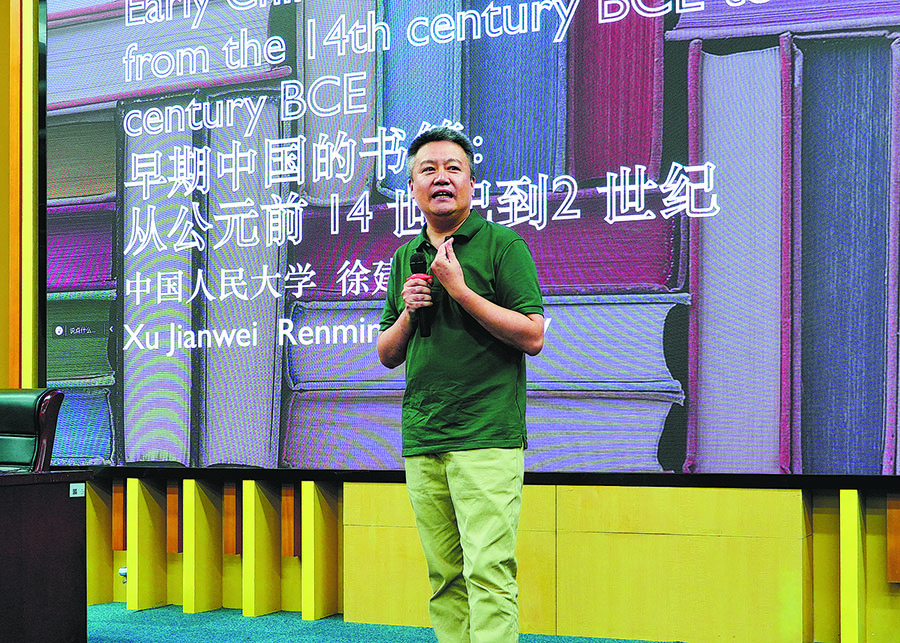The birth of the book in China


A similar situation applies to the Shi Jing, which is said to be a compilation of ancient poetry by Confucius. Also known as The Book of Songs or the Classic of Poetry, the early version of the book was comprised of 311 pieces of music dating from the 11th to the 6th century BC — six of which were purely instrumental. These were mainly folk ballads and ritual hymns with grand narratives that were designed to be sung and danced to during sacrificial ceremonies.
It's widely believed that Confucius chose from among the popular songs of the time and introduced them into his collection of poetry, endowing them with a new textual structure and political, moral or ethical significance. The Shi Jing is one of China's earliest books.
Since the 2nd century BC, its textual tradition began to dominate, and the musical component was gradually lost. Oral transmission remained crucial to the book's spread until the 7th century, according to Xu Jianwei, professor at the School of Liberal Arts at the RUC.
Kern says that oral form of the Shi Jing did not vary greatly, but its written form did. Chinese contains a large number of homophones — different characters with the same sound — and so transcription depended on what the scribes thought they had heard when the text was recited, and they transcribed it according to this understanding. Therefore, interpretation was highly localized and often idiosyncratic.
"There was great tolerance for the fact that people could encounter the same story, the same problem, and the same philosophical argument in multiple contexts, and always in a different way," Kern says.
He adds that this indicates the absence of emphasis on authorship in early China. People seldom asked who had written a text, nor was the author's name included on bamboo or silk manuscripts, which is very different from the ancient Greek and Arabic traditions.
"The authority of early Chinese texts derived not from their authors, but from the tradition inspired by the thoughts of the great philosophers," Kern says.
For his part, Xu expounded on how the Shi Jing evolved into the book people read today.
Four mainstream textual versions were developed around the 2nd century BC.Among them was one that scholars Mao Heng and his nephew Mao Chang annotated at the beginning of the Western Han Dynasty. Centuries later, Eastern Han Dynasty (25-220) Confucian scholar Zheng Xuan (127-200) completed his own annotation of the Shi Jing based on this earlier work. Known as the Mao Shi Zhuan Jian, Zheng's version gradually became the standard rendition that is read until today.
For each sentence in Mao Shi Zhuan Jian, Zheng paralleled the original text of the Shi Jing, the Mao annotation, as well as adding his own annotations. He also added an annotation to repeated words and sentences each time they appear, so that readers don't have to look them up again, and can start reading wherever they want. He also ensured that the annotations constituted a coherent meaning system free of contradictions.
Xu says that Zheng's version was intended for independent reading, a major transformation in the transmission of knowledge in ancient China.
Before that, memorization and oral transmission were central. When Western Han Dynasty scholar-official Dongfang Shuo (154-93 BC) offered his services to the emperor, he claimed that, at the age of 19, he could recite 440,000 characters of the classics, including the arts of war.


















